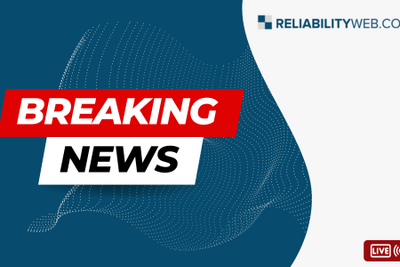Teledyne FLIR, Preventative Maintenance: Pulling Out All The Stops
Many companies have an annual shutdown where essential maintenance is carried out without affecting production. Senior management are perfectly happy, accepting the fact that no production is taking place for two weeks as contingency measures will have been put in place to build stock levels and ensure customer satisfaction.
On the other hand, unscheduled downtime can prove extremely costly and even be an organization’s downfall. When a production line suddenly stops it has the potential to disrupt the entire supply chain, leading to delays in product delivery and customer dissatisfaction.
The cost of breakdowns clearly goes way beyond the cost of a replacement component. Take an industrial gearbox for example; many units are bespoke pieces of equipment that cannot be bought off a shelf. Lead times for such items can be several days or even weeks, putting additional stress on other lines within your organization. Other hidden costs such as overtime pay for production workers and expenses for emergency repairs also must be taken into account when calculating the true cost of breakdown.
In the world of preventative maintenance there are an array of different tools and techniques available. A well proven technique that has been used for many years is used oil analysis. Although capable of providing very accurate results, it can prove to be time consuming as the analysis usually takes place off site and results are provided hours or even days later. Another drawback is that direct access to the piece of equipment is required to draw out the fluid, something that is not always possible if the equipment is elevated or in an area of restricted access.
Thermography is a powerful tool for preventative maintenance in manufacturing. By simply pointing an infra-red camera at a piece of equipment, heat patterns and anomalies in equipment can be quickly detected. For example when a bearing exhibits excessive wear in a gear box, frictional forces rise and heat is generated. A thermal camera is capable of detecting this heat and thus specific components can be identified, and the appropriate remedial action undertaken.
In addition to being non-invasive, thermal imaging can also be carried out at a distance meaning those difficult to access areas are all within reach. And of course, all the analysis can be carried out whilst the machinery is still in operation, meaning production is not disrupted.
If analysis is carried out at regular frequencies valuable data can be obtained that can be used to track the condition of equipment over time. This data-driven approach enables more informed decision-making and better planning of maintenance activities. Overall, thermography is an essential component of a robust preventative maintenance strategy, ensuring operational continuity and safety.
Teledyne FLIR specialize in the design and production of thermal imaging equipment including thermal cameras and sensors. Over many years they have built a worldwide reputation for innovative technology can be used over a wide range of industries.
For engineers who have had many years of experience with thermal imaging cameras, the technology provides a deep understanding of the equipment’s condition, especially if used frequently allowing for trend analysis to be gained. However, even relatively inexperienced users can gain significant amounts of information on potential problems.
Several of the FLIR thermal cameras contain software that enables users to establish an ‘inspection route’.Once established any user can follow the same route with the camera automatically selecting the optimum settings and parameters for each piece of equipment on the route. Once complete the camera wirelessly transfers data and images to a pre-prepared report allowing ease of analysis and interpretation.
If you are concerned about unscheduled downtime or have a maintenance department that are always adopting a reactive stance to breakdowns, then it’s time to explore the potential of thermal imaging cameras and establish how they can reduce the equipment failures, ensuring your organization maximizes uptime and in turn your competitive advantage.
www.FLIR.com has more information, especially in the ‘Condition Monitoring’ section where you can request a call from one of the team of experts, who will be happy to talk through the solutions and features, or organize an on-site demo to see how FLIR cameras can support your organization.
